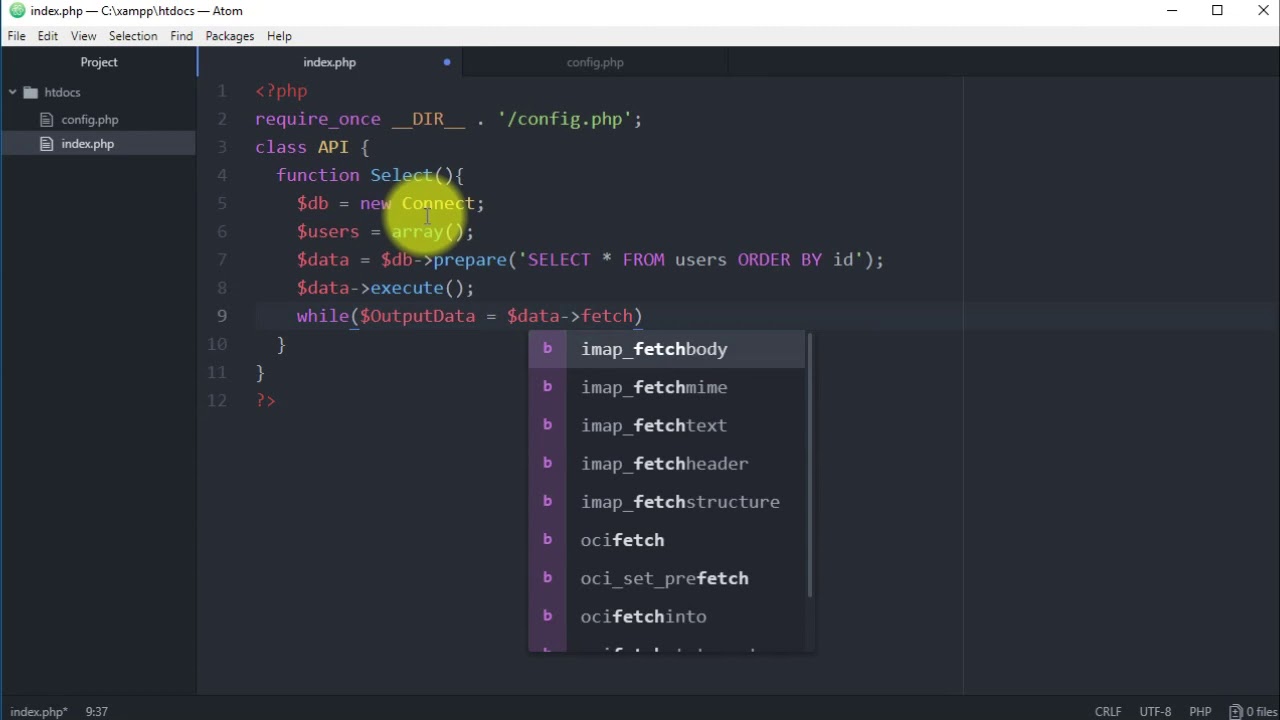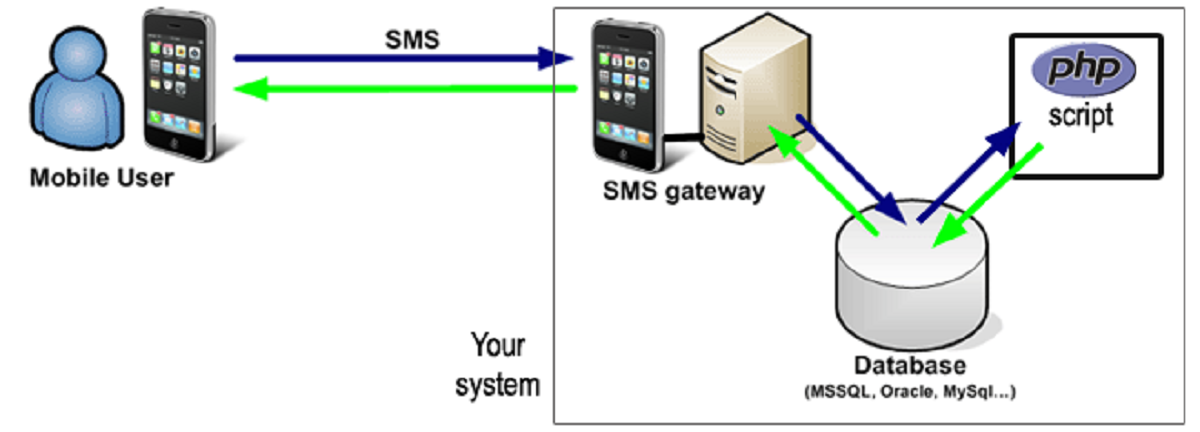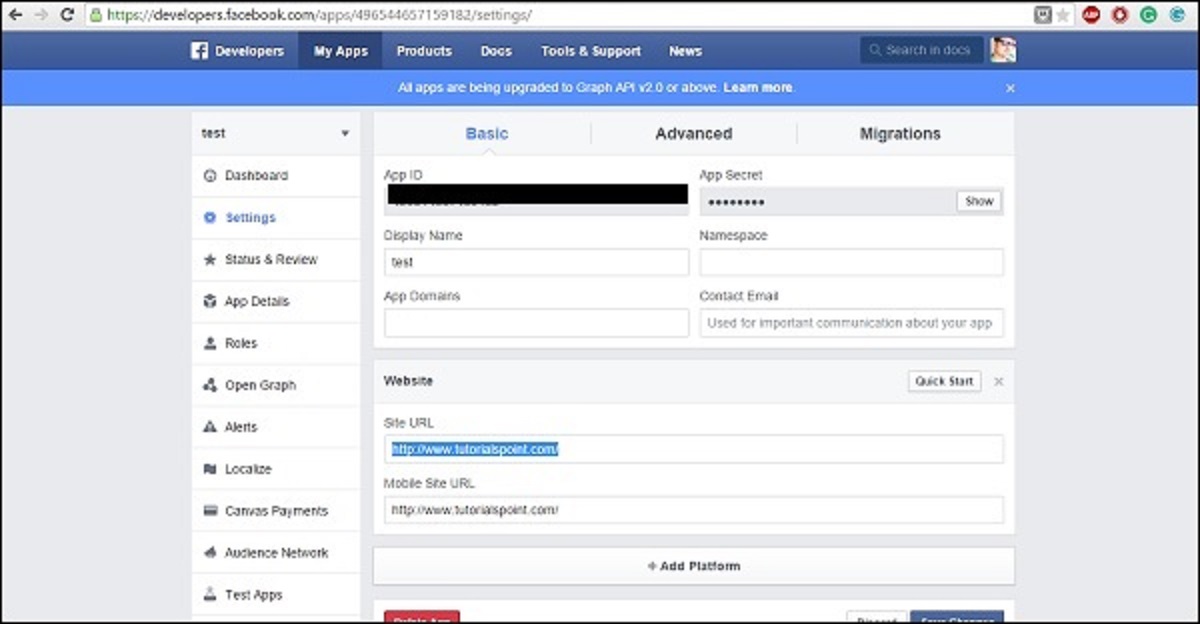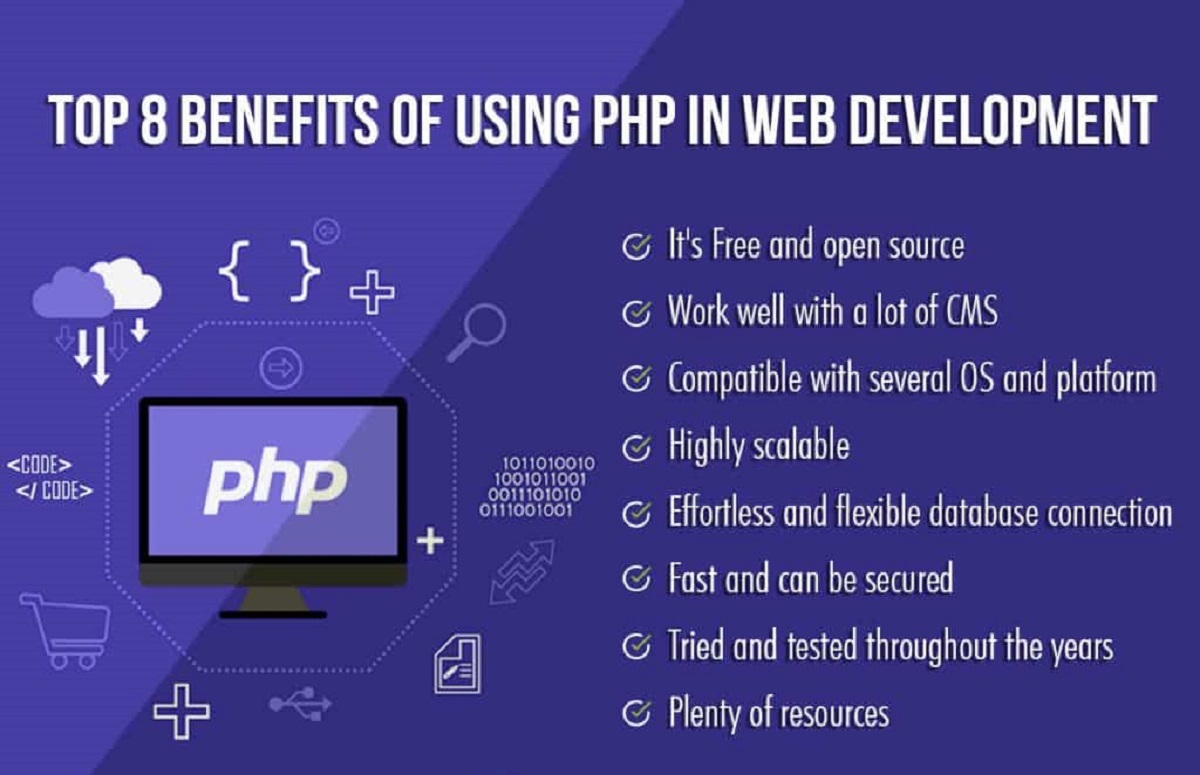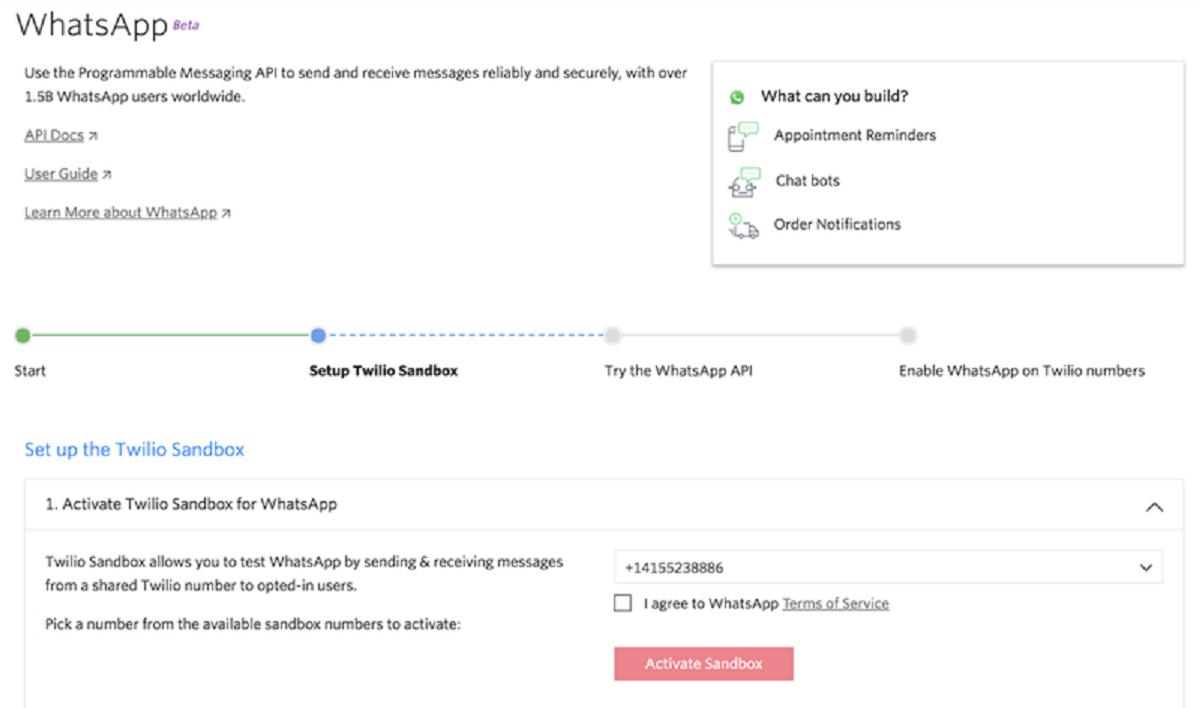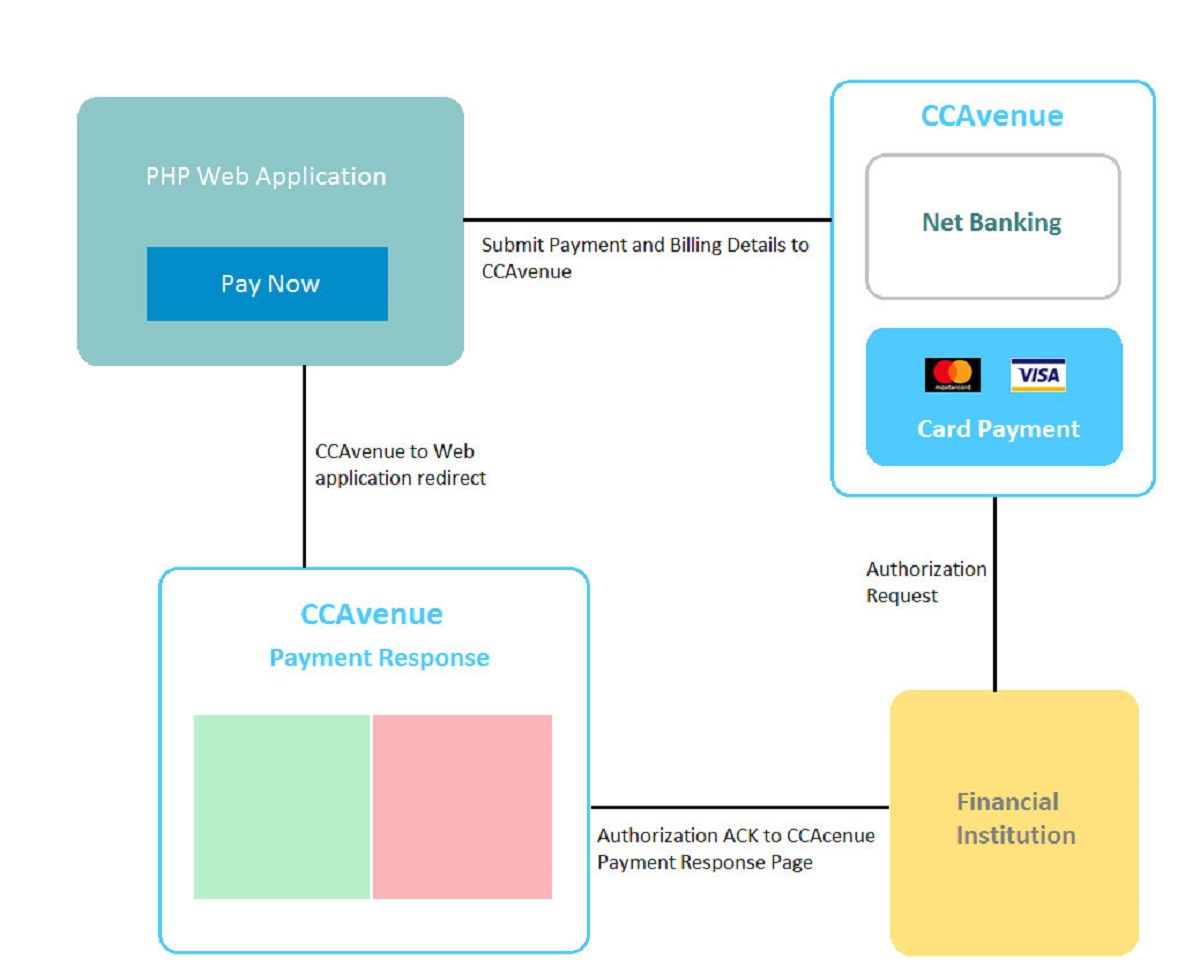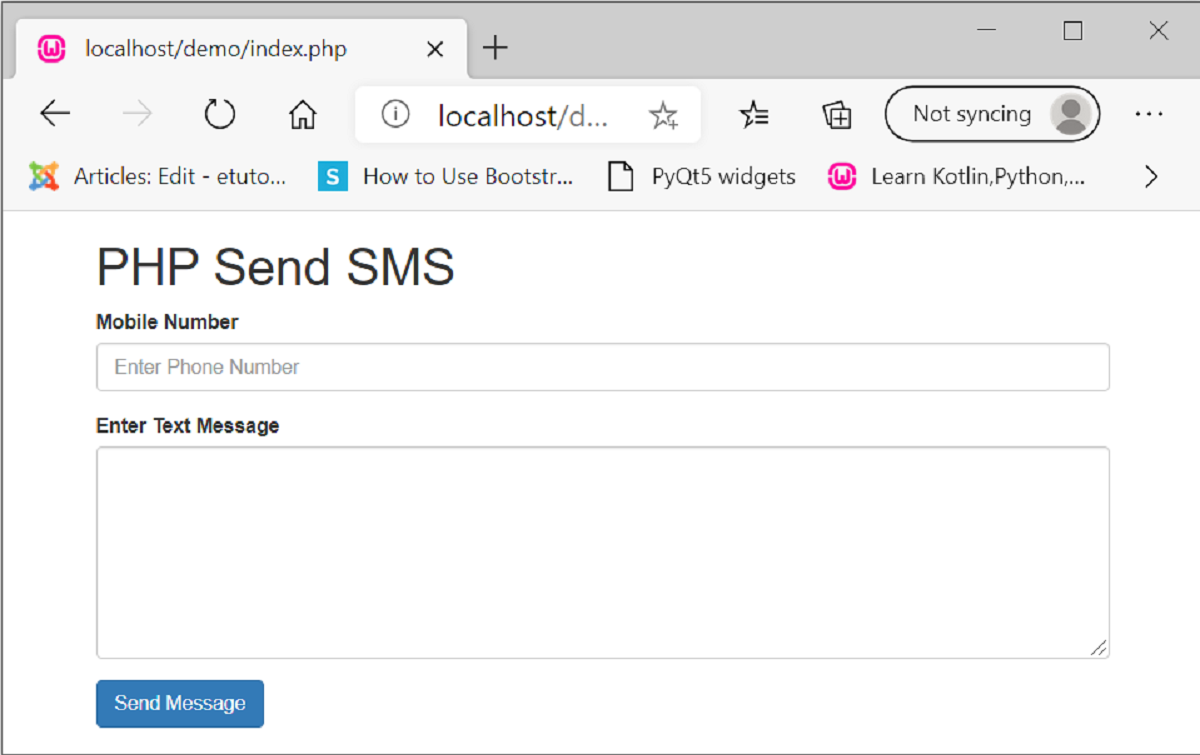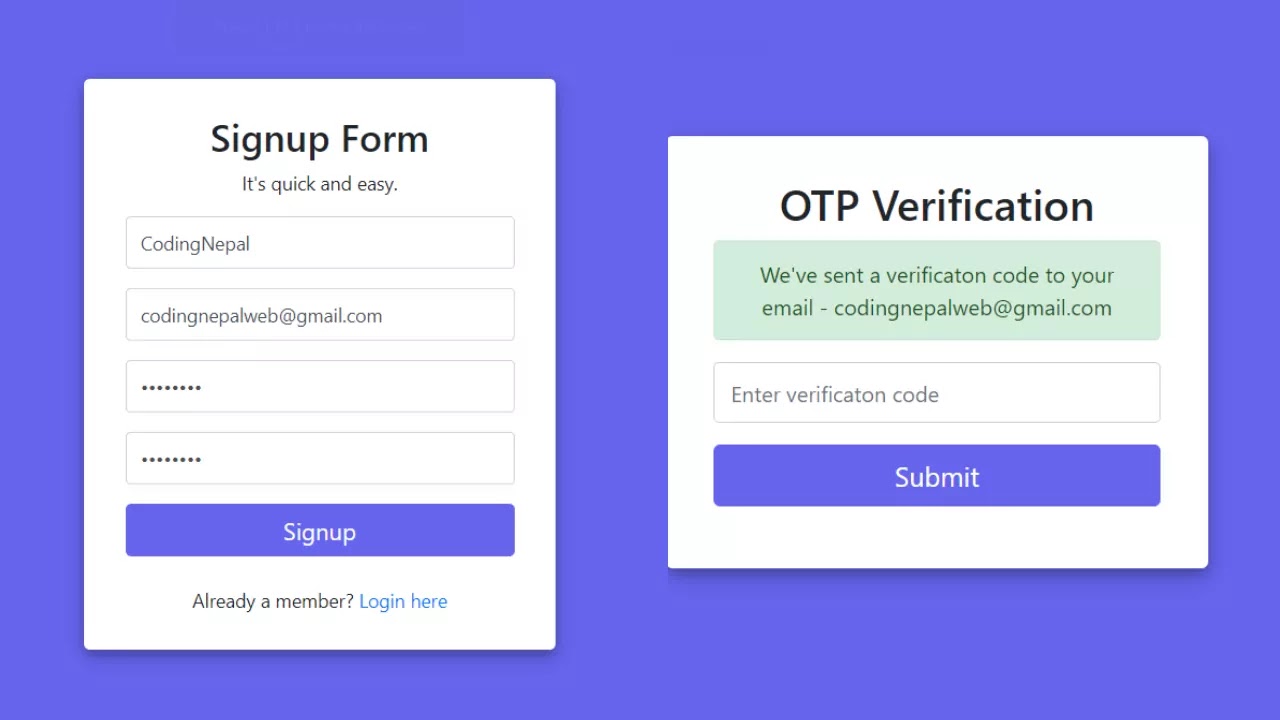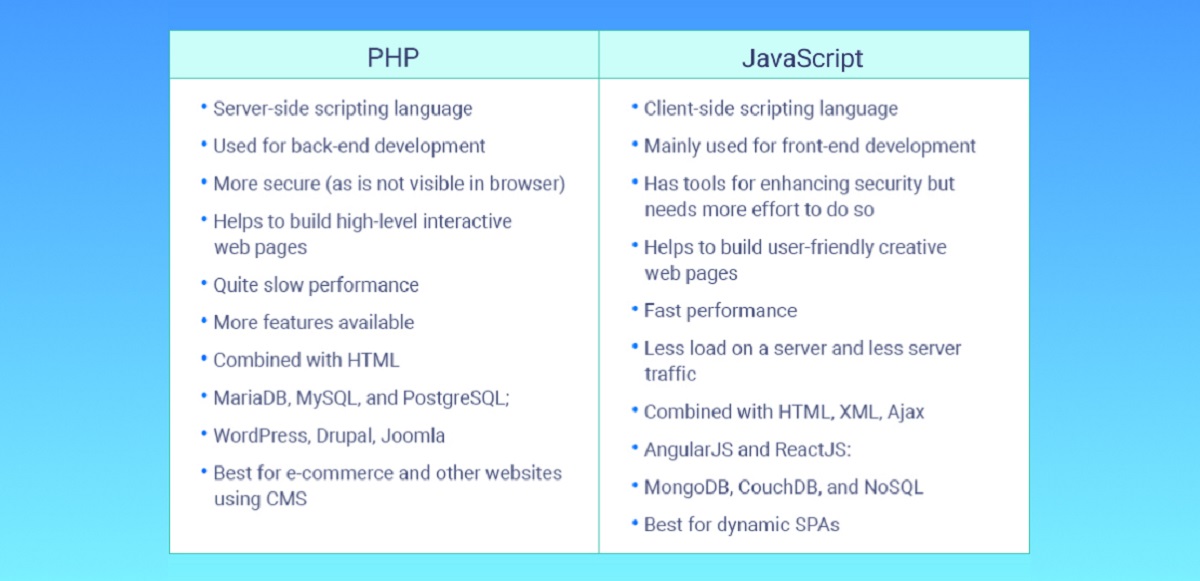Introduction
An Application Programming Interface (API) serves as a bridge between different software applications, enabling them to communicate and share data with each other. It allows developers to leverage the functionality of existing systems and build upon them, saving time and effort.
In this article, we will explore the process of creating an API using PHP, a popular server-side scripting language. PHP provides a robust and flexible environment for developing APIs, making it an excellent choice for web developers.
Building an API in PHP opens up a world of possibilities. It allows you to expose your database, services, or any other resources to other applications, whether they are web-based, mobile, or desktop. By creating an API, you empower developers to integrate your system into their applications, extending its reach and usability.
Creating an API in PHP might seem intimidating, especially if you are new to web development. However, with the right knowledge and tools at your disposal, it can be an exciting and rewarding endeavor. This article will guide you through the step-by-step process of creating a PHP API, from setting up your environment to documenting your endpoints.
Whether you are a beginner or an experienced PHP developer, this article will provide you with the essential knowledge and techniques needed to create a robust and well-documented API. So, let’s dive in and unlock the power of PHP in creating APIs!
What is an API?
An API, short for Application Programming Interface, is a set of rules and protocols that allow different software applications to communicate and interact with each other. It defines the methods and data formats that applications can use to request and exchange information.
APIs act as intermediaries, enabling developers to leverage the functionality and data of existing systems without having to understand their inner workings. They provide a standardized way for applications to interact with each other, promoting interoperability and integration.
Think of an API as a waiter at a restaurant. When you go to a restaurant, you don’t need to enter the kitchen and cook the food yourself. Instead, you communicate your order to the waiter, who then communicates it to the kitchen. The kitchen prepares the food and sends it back to you through the waiter. In this scenario, the waiter is the API, facilitating the communication between the customer (application) and the kitchen (existing system).
APIs can be used for various purposes. They can retrieve data from a database, perform calculations, process payments, and much more. By exposing specific functionalities through an API, developers can build upon existing systems and create new applications that enhance and extend their capabilities.
APIs come in different formats, including Web APIs, which are designed to be accessed over the internet using protocols such as HTTP. Web APIs are commonly used to retrieve data from remote servers, integrate social media platforms into applications, and access online services.
Overall, APIs play a crucial role in modern software development. They enable developers to take advantage of existing resources, accelerate development processes, and create innovative and interconnected applications. Understanding the concept of APIs is essential for anyone involved in web development, as they provide the foundation for building dynamic and integrated applications.
Why create an API in PHP?
PHP, a server-side scripting language, is widely used for web development due to its simplicity, versatility, and extensive community support. When it comes to creating APIs, PHP offers several advantages that make it an excellent choice for developers.
1. Familiarity and Accessibility: PHP has been around for many years and has a large developer community. This means there are ample resources, documentation, and tutorials available, making it easier for developers to learn and work with PHP. If you already have experience with PHP, creating an API in PHP will be a natural extension of your skills.
2. Flexibility and Scalability: PHP provides developers with the flexibility to build APIs that suit their specific requirements. Whether you need a simple API to retrieve data from a database or a complex API to handle large-scale transactions, PHP can handle it. PHP also offers various frameworks and libraries that simplify the development process, making it easier to scale your API as your application grows.
3. Wide Support and Integration: PHP has vast support across different operating systems, web servers, and databases. It integrates seamlessly with popular technologies like MySQL, PostgreSQL, and Apache, further enhancing its compatibility with existing systems. This makes PHP a suitable choice for creating APIs that need to interact with diverse software environments.
4. Performance and Efficiency: PHP is designed to be fast and efficient, making it well-suited for building high-performing APIs. It has a lightweight architecture and a built-in caching system, resulting in quick response times and improved overall performance.
5. Security: PHP has a robust security ecosystem with built-in features and functions to handle common web security challenges. Developers can utilize various security libraries and practices to ensure the protection of sensitive data and prevent common vulnerabilities.
6. Community Support and Updates: PHP has a thriving community of developers who actively contribute to its development and maintenance. This ensures that PHP is constantly evolving, with regular updates, bug fixes, and security patches. By using PHP for your API development, you can leverage the support and expertise of the community.
7. Cost-efficiency: PHP is open-source, meaning it is free to use and modify. This makes PHP an economical choice for API development, allowing developers to focus their resources on other essential aspects of the project.
Overall, PHP provides a solid foundation for creating APIs. Its accessibility, flexibility, performance, and security make it a popular choice among developers. By harnessing the power of PHP, you can build powerful and efficient APIs that seamlessly integrate with existing systems and provide the necessary functionality for your applications.
Step 1: Set up your environment
Before diving into API development with PHP, it is essential to set up your development environment properly. This ensures that you have all the necessary tools and dependencies in place to create and test your API effectively.
Here are the key steps to set up your environment for PHP API development:
1. Install PHP: Start by installing PHP on your computer. PHP can be easily downloaded and installed from the official PHP website. Choose the version that best fits your requirements and follow the installation instructions for your operating system.
2. Set up a web server: PHP relies on a web server to run. You can choose Apache, Nginx, or any other web server that supports PHP. Install the web server of your choice and configure it to work with PHP.
3. Install a database server: If your API requires interaction with a database, you will need to install a database server like MySQL, PostgreSQL, or SQLite. Make sure to install and configure the database server according to your needs and the specifications of your API.
4. Choose a development environment: It is recommended to use an Integrated Development Environment (IDE) for PHP development. Popular options include PhpStorm, Visual Studio Code with PHP extensions, and NetBeans. Choose an IDE that suits your preferences and configure it for PHP development.
5. Install additional dependencies: Depending on the specific requirements of your API, you may need to install additional dependencies such as libraries, frameworks, or package managers. For example, if you are using a framework like Laravel or Symfony, you will need to install them using composer, the PHP dependency manager.
6. Test your setup: Once everything is set up, test your PHP installation, web server, and database connection to ensure they are functioning correctly. Create a simple PHP file that displays “Hello, World!” and run it in your web browser to verify that PHP is working as expected.
7. Set up version control: It is highly recommended to use version control, such as Git, to track and manage changes to your codebase. Set up a version control system and initialize a repository for your API project.
By following these steps, you will have a well-configured environment to begin your PHP API development journey. Having a stable and optimized environment is crucial for efficient development and testing of your APIs. Once your environment is set up, you can move on to the next steps of designing, writing, and testing your API.
Step 2: Design your API
Designing your API is a critical step in the development process. It involves defining the endpoints, payload structure, and communication protocols that your API will support. A well-designed API makes it easier for developers to understand and work with your API, resulting in smooth integration and improved user experience.
Here are the key considerations when designing your API:
1. Identify the purpose and scope: Clearly define the purpose of your API and the specific functionalities it will provide. Consider what resources or data your API will expose and who the target audience is. Understanding the overall scope of your API will help you make informed design decisions.
2. Choose between REST or SOAP: Decide whether your API will follow the REST (Representational State Transfer) or SOAP (Simple Object Access Protocol) architectural style. REST APIs are widely used due to their simplicity and scalability, while SOAP APIs offer robustness and support for complex operations. Consider the requirements of your project and choose the architecture that aligns best with them.
3. Define endpoints and resources: An endpoint is a specific URL that resources can be accessed through. Map out the endpoints that your API will provide and determine the resources associated with each endpoint. Use clear and descriptive URLs that represent the purpose of each resource.
4. Determine request methods and response formats: Decide which HTTP request methods (GET, POST, PUT, DELETE, etc.) your API will support for each endpoint. Consider the expected response formats, such as JSON or XML, and define the structure of the response data.
5. Design a logical and consistent data structure: Define the structure of the data that will be sent and received by your API. Consider the data fields, their types, and any validation rules or constraints. Create a clear and consistent data model to ensure compatibility and ease of use.
6. Consider authentication and security: Determine the authentication mechanism your API will use to ensure secure access. Common authentication methods include API keys, OAuth, or JWT (JSON Web Tokens). Implement appropriate security measures based on the sensitivity of the data and the requirements of your API.
7. Plan for error handling: Define how your API will handle and communicate errors. Design a consistent error response format that includes appropriate HTTP status codes and informative error messages. Consider providing detailed error explanations to help developers troubleshoot issues.
8. Document your API: Proper documentation is crucial for developers to understand and integrate with your API. Create comprehensive documentation that includes the API endpoints, request and response formats, authentication requirements, and any additional features or limitations. Clearly explain how to use each endpoint and provide example requests and responses.
By carefully designing your API and considering these key factors, you will create a well-structured and developer-friendly interface. A well-designed API sets the foundation for efficient development, smooth integration, and a positive user experience.
Step 3: Choose a framework or library
Choosing the right framework or library is a crucial step in PHP API development. Frameworks and libraries provide a set of tools, functions, and pre-built components that simplify the development process and enhance the functionality of your API.
Here are the key considerations when selecting a framework or library for your PHP API:
1. Evaluate project requirements: Assess the specific requirements and goals of your API project. Consider factors such as scalability, performance, security, database integration, and community support. Determine which features and capabilities are essential for your API and make a list of desired functionalities.
2. Research available options: Conduct thorough research on the available PHP frameworks and libraries. Popular options for PHP API development include Laravel, Symfony, Slim, and Lumen. Explore their official documentation, community forums, and online resources to understand their features, strengths, and weaknesses.
3. Consider ease of use and learning curve: Evaluate the learning curve of each framework or library. Consider your team’s familiarity with PHP and their ability to quickly adapt to the chosen framework. Choose a framework that offers a developer-friendly environment and provides comprehensive documentation and tutorials.
4. Assess community support: Consider the size and activity of the community surrounding the framework or library. A vibrant and active community ensures regular updates, bug fixes, and a wealth of resources. It can also provide support and guidance when encountering issues or obstacles during the development process.
5. Review performance and scalability: Check the performance benchmarks and scalability of the frameworks or libraries under consideration. Look for information regarding the efficiency of database connections, caching mechanisms, and overall speed. Choose a framework that can handle the expected traffic and scale seamlessly as your API grows.
6. Security features: Assess the security features and practices offered by the frameworks or libraries. Look for features such as input validation, protection against cross-site scripting (XSS) and SQL injection attacks, encryption, and secure authentication mechanisms. Security should be a top priority when selecting a framework for your API.
7. Consider integration possibilities: Evaluate the integration possibilities with third-party services and tools. Consider the compatibility of the framework or library with popular databases, caching systems, API testing tools, and other services. Choose a framework or library that aligns well with your existing technology stack and simplifies integration with external components.
8. Assess maintenance and long-term support: Check the maintenance and long-term support policy of the frameworks or libraries. Choose a framework that has a stable release cycle, regular updates, and a commitment to providing long-term support. This ensures that your API remains compatible with upcoming PHP versions and security patches.
By carefully evaluating these aspects and considering your project requirements, you can choose a PHP framework or library that best fits your needs. A well-chosen framework or library streamlines development, improves efficiency, and accelerates the delivery of a robust and reliable API.
Step 4: Write your PHP code
Once you have set up your development environment, designed your API, and chosen a framework or library, it’s time to start writing your PHP code. This step involves implementing the logic and functionality of your API endpoints using PHP.
Here are the key steps to consider when writing PHP code for your API:
1. Use the chosen framework or library: Utilize the features, functions, and conventions provided by the selected framework or library. Follow the guidelines and best practices recommended by the framework’s documentation to ensure standardized and maintainable code.
2. Define route handlers: Set up route handlers for each endpoint of your API. Map each endpoint to a specific function or method that will handle the request and generate the appropriate response. Implement the required logic and data retrieval or manipulation within these handlers.
3. Validate and sanitize input: Validate and sanitize the input data received from the API requests. Implement validation rules to ensure the data is in the correct format and meets the required criteria. Sanitize any user input to prevent security vulnerabilities, such as SQL injection or XSS attacks.
4. Implement business logic: Incorporate the business logic of your API within the route handlers. This includes performing any necessary calculations, data processing, or interacting with databases or external services. Follow best practices for separation of concerns to keep your code organized and maintainable.
5. Handle errors and exceptions: Implement proper error handling to provide meaningful error messages and responses to API consumers. Catch any exceptions that occur during the execution of your code and generate appropriate error responses with the corresponding HTTP status codes.
6. Implement authentication and authorization: If your API requires authentication and authorization, implement the necessary mechanisms. Verify the authenticity of API requests using tokens, session management, or other authentication methods. Determine the level of access granted to different users or user roles to enforce the desired permission controls.
7. Implement caching: Consider implementing caching mechanisms to improve the performance of your API. Use appropriate caching strategies to store frequently accessed data or response payloads. This can help reduce unnecessary database queries and improve the overall speed and efficiency of your API.
8. Write clean and maintainable code: Follow coding best practices to ensure your PHP code is clean, readable, and maintainable. Use proper indentation, descriptive variable and function names, and add comments to explain complex logic or important aspects of your code. Following a consistent coding style will make it easier for you and other developers to understand and modify the codebase in the future.
By following these steps and adhering to best coding practices, you can write clean and functional PHP code for your API. Regularly test your code during the development process to identify and fix any issues or bugs. This step brings your API to life as you transform your design into executable code.
Step 5: Test your API
After writing your PHP code for the API, it is essential to thoroughly test it to ensure its functionality, reliability, and adherence to the desired specifications. Testing your API helps identify and address any potential issues or bugs before deploying it to a production environment.
Here are the key steps to consider when testing your API:
1. Unit testing: Write unit tests to independently verify the functionality and behavior of individual components or functions within your API code. Use testing frameworks, such as PHPUnit or Codeception, to automate and streamline the unit testing process. Ensure that each unit of your code functions as expected.
2. Integration testing: Perform integration tests to verify the interaction and compatibility of different components of your API. Test how your API behaves when integrated with third-party libraries or services, such as databases or external APIs. Identify and fix any issues related to the integration of components.
3. Endpoint testing: Test each API endpoint individually by sending various requests and validating the responses. Use a tool like Postman or cURL to simulate different types of requests, including GET, POST, PUT, DELETE, and PATCH. Verify that the correct data is being returned, and all required parameters and headers are handled correctly.
4. Input validation and error handling: Test the resilience of your API by deliberately sending incorrect or missing data to test how it handles input validation and error handling. Ensure that appropriate error messages and status codes are returned for various types of invalid requests.
5. Load and performance testing: Simulate high traffic and load scenarios to evaluate the performance and scalability of your API. Use tools like Apache JMeter or Siege to send a large number of concurrent requests and measure response times. Identify any performance bottlenecks and optimize your code accordingly.
6. Security testing: Conduct security audits and penetration testing to identify potential vulnerabilities in your API. Test the input fields for SQL injection, test for cross-site scripting (XSS) attacks, and assess the effectiveness of authentication and authorization mechanisms. Implement necessary measures to mitigate any security risks.
7. Monitor and log: Implement logging mechanisms to record API errors, exceptions, and other important events during testing. Monitor the logs closely to identify any patterns or recurring issues. Logging provides valuable insights for debugging and maintenance purposes.
8. Document test cases: Document the test cases and their expected results for future reference. This documentation will help identify specific scenarios and ensure consistent testing during maintenance or future enhancements.
By thoroughly testing your API, you can uncover and address issues early on, ensuring a stable and reliable product. A robust testing process helps improve the quality of your API, enhances user satisfaction, and minimizes the risk of unexpected behavior in a production environment.
Step 6: Document your API
Proper documentation is crucial for developers who will be integrating with your API. It serves as a guide on how to use your API, providing clear instructions on the available endpoints, parameters, authentication methods, and response formats. Documenting your API not only helps developers understand its functionality but also enhances the overall user experience.
Here are the key steps to consider when documenting your API:
1. API Reference: Create an API reference or documentation hub that serves as a central source of information for your API. Include a clear and concise description of the API’s purpose, along with a list of its available endpoints.
2. Endpoint details: Document each endpoint individually, providing a description of its functionality and the HTTP methods it supports (e.g., GET, POST, PUT, DELETE). Explain the purpose of each endpoint and list the required parameters, their data types, and any optional parameters.
3. Request examples: Include example requests for each endpoint to demonstrate how to properly structure and format the request. Show the required headers and request payload, if applicable.
4. Response examples: Provide example responses for each endpoint to illustrate the structure and format of the expected response data. Include both success and error response examples, with the corresponding HTTP status codes and any error messages or error details.
5. Authentication and Authorization: Detail the authentication methods and requirements for accessing the API. Explain how to obtain and use API keys, authentication tokens, or any other authentication mechanisms. Document the required headers or parameters for authentication purposes.
6. Rate limiting and throttling: If your API implements rate limiting or throttling to control the usage of the API, document the limits, restrictions, and any special conditions. Inform developers on how to handle rate limit errors and suggest best practices.
7. Usage guidelines: Provide guidelines on best practices for using your API, including recommendations for error handling, data validation, and data format conventions. Offer suggestions on how to optimize API usage and improve performance.
8. Code samples and SDKs: Include code samples in multiple programming languages to demonstrate how to interact with your API. Offer software development kits (SDKs) or client libraries for popular programming languages, if applicable, to make it easier for developers to integrate your API into their applications.
9. FAQ and Troubleshooting: Anticipate common queries or issues that developers may encounter when using your API. Include a frequently asked questions (FAQ) section and troubleshooting guides to assist developers in resolving common problems.
By thoroughly documenting your API, you empower developers to integrate with it more efficiently and reduce the learning curve associated with using your API. Clear and comprehensive documentation improves the developer experience and encourages engagement with your API.
Conclusion
Creating an API in PHP is a powerful way to extend the functionality of your applications and enable seamless integration with other systems. By following the step-by-step process outlined in this article, you can successfully design, develop, and document your PHP API.
Setting up your environment lays the foundation for smooth development, ensuring all necessary tools and dependencies are in place. Designing your API involves careful consideration of endpoints, data structures, and security measures. Choosing the right framework or library streamlines development and enhances the functionality of your API.
Writing clean and maintainable PHP code is essential for building a reliable and efficient API. Thoroughly testing your API helps identify and resolve bugs, ensuring its performance and reliability. Documenting your API provides crucial guidance for developers wishing to integrate with your API, improving the overall user experience.
Remember to continuously maintain and update your API to align with changing requirements and industry best practices. Regularly monitor and analyze the usage and performance of your API to identify areas for improvement.
Creating an API in PHP requires patience, attention to detail, and a deep understanding of the needs of your target audience. However, with the right approach, tools, and knowledge, you can create a robust and effective PHP API that serves as a valuable asset for your organization.







